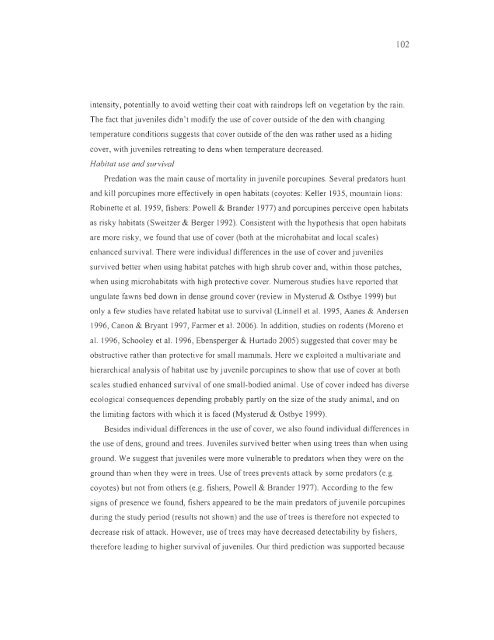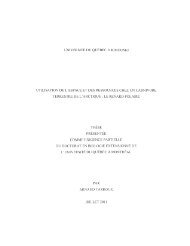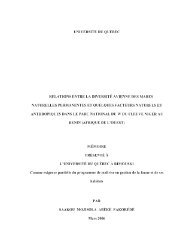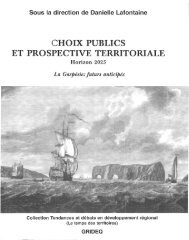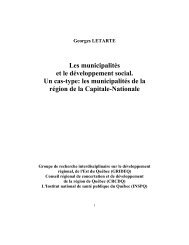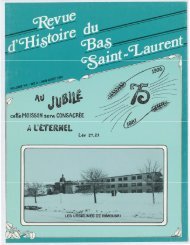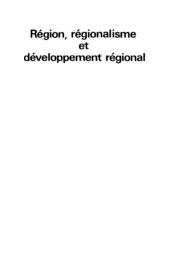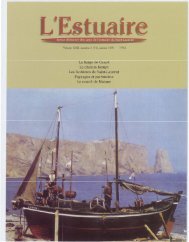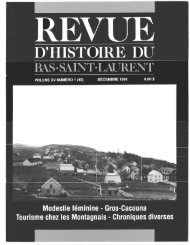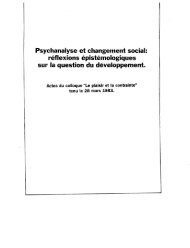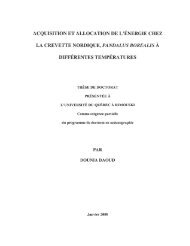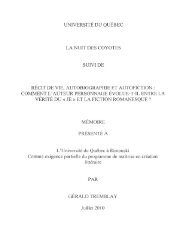influence du climat et de la prédation sur l'utilisation de l'habitat et la ...
influence du climat et de la prédation sur l'utilisation de l'habitat et la ...
influence du climat et de la prédation sur l'utilisation de l'habitat et la ...
Create successful ePaper yourself
Turn your PDF publications into a flip-book with our unique Google optimized e-Paper software.
102<br />
intensity, potentially to avoid w<strong>et</strong>ting their coat with raindrops left on veg<strong>et</strong>ation by the rain.<br />
The fact that juveniles didn't modify the use of coyer outsi<strong>de</strong> of the <strong>de</strong>n with changing<br />
temperature conditions suggests that coyer outsi<strong>de</strong> of the <strong>de</strong>n was rather used as a hiding<br />
co ver, with juveniles r<strong>et</strong>reating to <strong>de</strong>ns wh en temperature <strong>de</strong>creased.<br />
Habitat use and <strong>sur</strong>vival<br />
Predation was the main cause of mortality in juvenile porcupines. Several predators hunt<br />
and kill porcupines more effectively in open habitats (coyotes: Keller 1935, mountain lions:<br />
Robin<strong>et</strong>te <strong>et</strong> al. 1959, fishers: Powell & Bran<strong>de</strong>r 1977) and porcupines perceive open habitats<br />
as risky habitats (Sweitzer & Berger 1992). Consistent with the hypothesis that open habitats<br />
are more risky, we found that use of coyer (both at the microhabitat and local scales)<br />
enhanced <strong>sur</strong>vival. There were indivi<strong>du</strong>al differences in the use of coyer and juveniles<br />
<strong>sur</strong>vived b<strong>et</strong>ter when using habitat patches with high shrub coyer and, within those patch es,<br />
when using microhabitats with high protective coyer. Numerous studies have reported that<br />
ungu<strong>la</strong>te fawns bed down in <strong>de</strong>nse ground coyer (review in Mysterud & Ostbye 1999) but<br />
only a few studies have re<strong>la</strong>ted habitat use to <strong>sur</strong>vival (Linnell <strong>et</strong> al. 1995, Aanes & An<strong>de</strong>rsen<br />
1996, Canon & Bryant 1997, Farrner <strong>et</strong> al. 2006). ln addition, studies on ro<strong>de</strong>nts (Moreno <strong>et</strong><br />
al. 1996, Schooley <strong>et</strong> al. 1996, Ebensperger & Hurtado 2005) suggested that coyer may be<br />
obstructive rather than protective for small mammals. Here we exploited a multivariate and<br />
hierarchical analysis of habitat use by juvenile porcupines to show that use of coyer at both<br />
scales studied enhanced <strong>sur</strong>vival of one small-bodied animal. Use of coyer in<strong>de</strong>ed has diverse<br />
ecological consequences <strong>de</strong>pending probably partly on the size of the study animal, and on<br />
the limiting factors with which it is faced (Mysterud & Ostbye 1999).<br />
Besi<strong>de</strong>s indivi<strong>du</strong>al differences in the use of coyer, we also found indivi<strong>du</strong>al differences in<br />
the use of <strong>de</strong>ns, ground and trees. Juveniles <strong>sur</strong>vived b<strong>et</strong>ter when using trees than when using<br />
ground. We suggest that juveniles were more vulnerable to predators when they were on the<br />
ground th an when they were in trees. Use oftrees prevents attack by sorne predators (e.g.<br />
coyotes) but not from others (e.g. fishers, Powell & Bran<strong>de</strong>r 1977). According to the few<br />
signs of presence we found, fishers appeared to be the main predators of juvenile porcupines<br />
<strong>du</strong>ring the study period (results not shown) and the use of trees is therefore not expected to<br />
<strong>de</strong>crease risk of attack. However, use of trees may have <strong>de</strong>creased d<strong>et</strong>ectability by fishers,<br />
therefore leading to higher <strong>sur</strong>vival of juveniles. Our third prediction was suppOlted because


